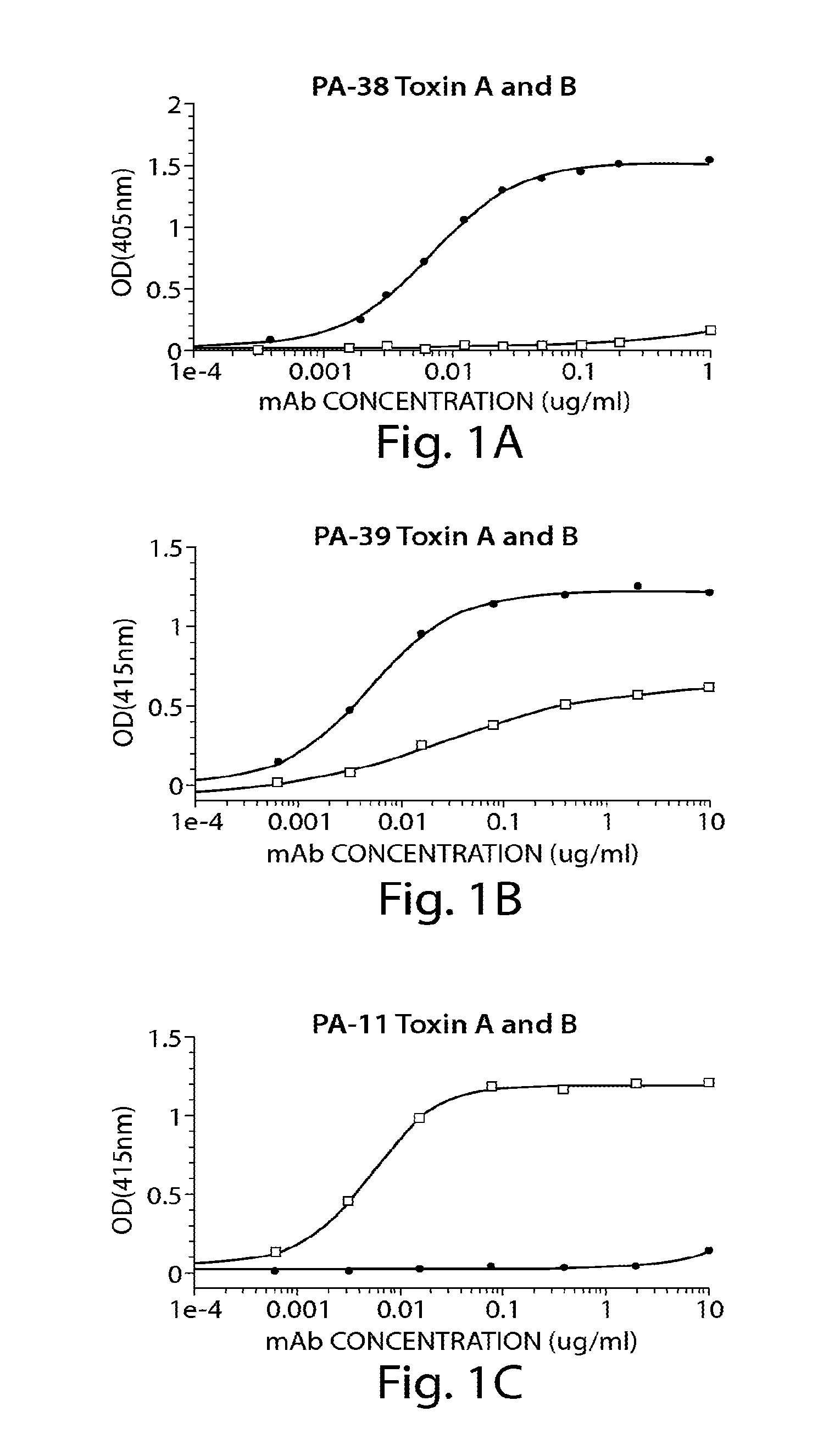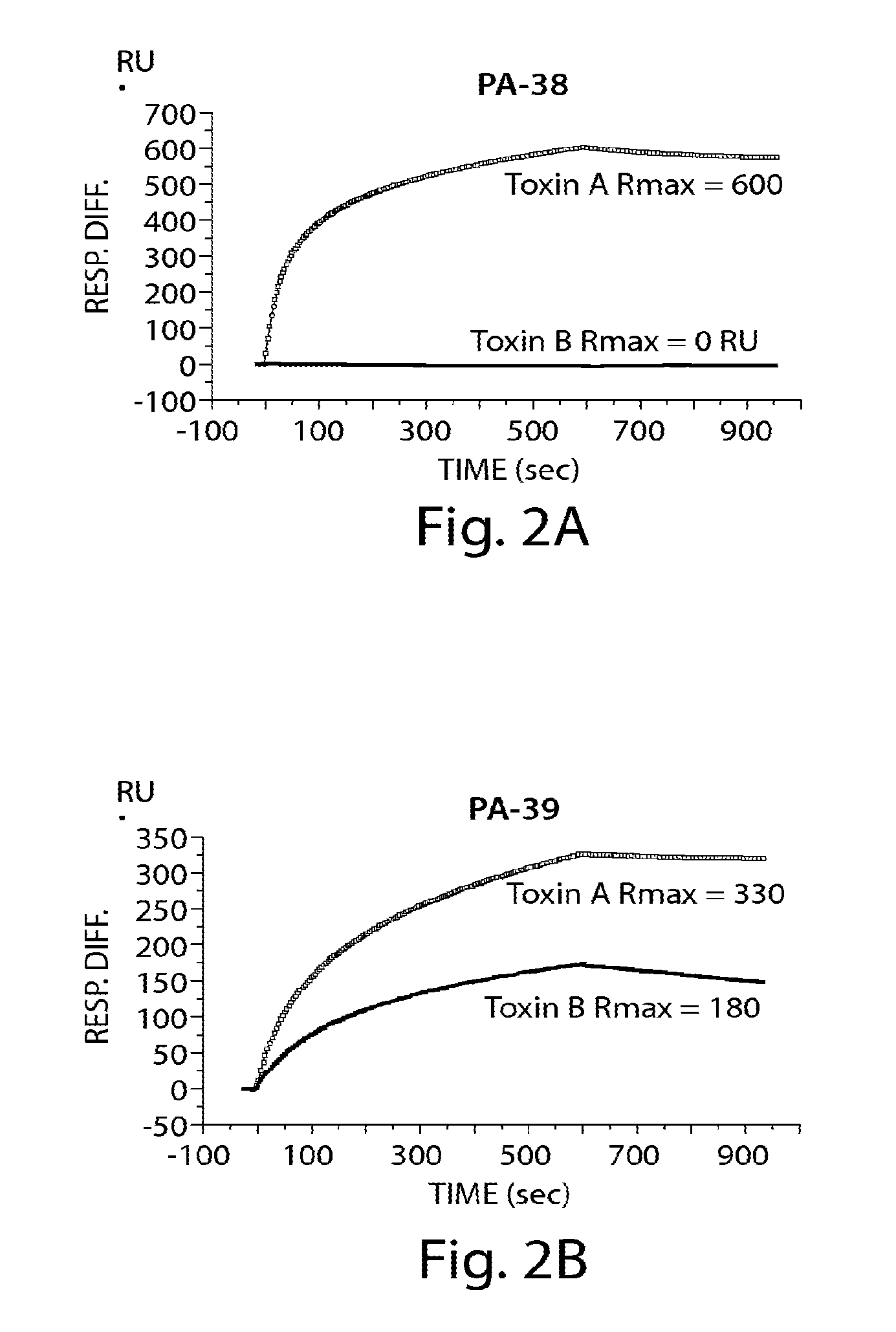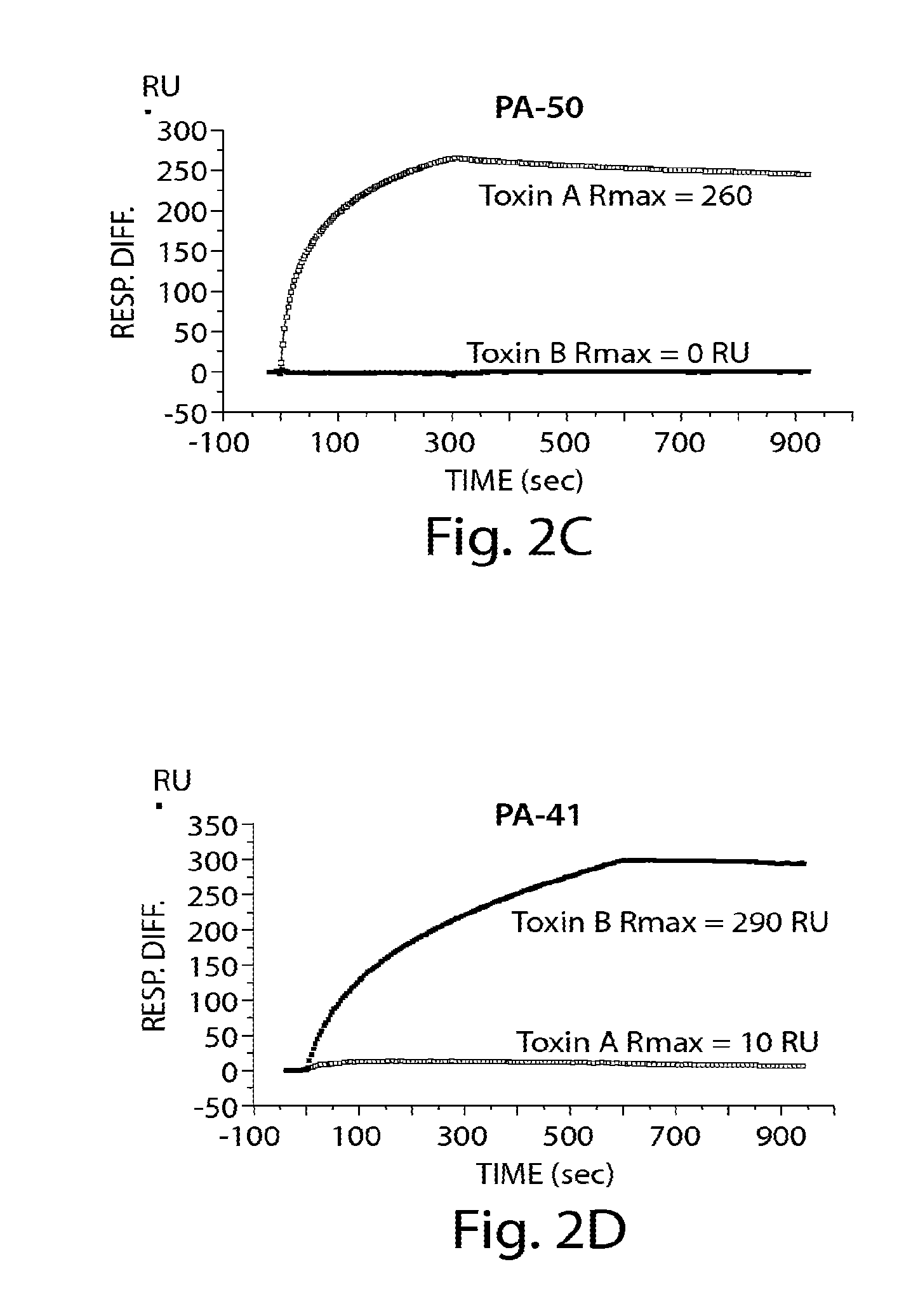Antibodies for the treatment of clostridium difficile-associated infection and disease
a technology for clostridium difficile and antibodies, applied in the field of antibodies for the treatment of clostridium difficile-associated infection and disease, can solve the problems of increased mortality, more frequent relapse, and failure to treat, and achieve the effect of improving the quality of li
- Summary
- Abstract
- Description
- Claims
- Application Information
AI Technical Summary
Benefits of technology
Problems solved by technology
Method used
Image
Examples
example 1
Generation of Neutralizing Monoclonal Antibodies Against C. difficile Toxin A and / or Toxin B
A. Immunogen Preparation
[0229]Neutralizing monoclonal antibodies directed against toxin A and / or toxin B of C. difficile were generated by immunizing mice with C. difficile toxin A toxoid (inactive form of toxin) and with active forms of toxin A and / or toxin B. The murine mAbs (PA-38: anti-toxin A mAb, ATCC # PTA-9888; PA-39: anti-toxin A and B mAb, ATCC # PTA-9692; PA-41: anti-toxin B mAb ATCC # PTA-9693; and PA-50: anti-toxin A mAb, ATCC # PTA-9694) were generated by immunizing animals with toxoid A followed by immunizations with the active form of toxin A and / or toxin B. Toxin A toxoid, toxin A, toxin B (List Biological Laboratories Inc., Campbell, Calif.) and toxin A (Techlab Inc., Blacksburg, Va.) were stored at 4° C. until use. The toxins and toxoid were derived from strain VPI 10463, a commonly used reference strain of C. difficile. Quil A adjuvant (Accurate Chemical, Westbury, N.Y.) w...
example 2
Specificity and Affinity of Anti-C difficile Toxin A and / or Toxin B mAbs of the Invention to Toxin A and / or Toxin B
[0237]A. ELISA to Determine mAb Specificity for Toxin A and / or Toxin B
[0238]ELISA plates (BD Biosciences) were coated with 50 ng / well of toxin A (List Laboratories) or 25 ng / well of toxin B (List Laboratories) overnight at 4° C. After washing plates with PBS− (PBS without calcium or magnesium, 0.05% Tween 20), wells were blocked with 200 μl of blocking buffer (PBS without calcium or magnesium, 0.1% Tween 20, 2.5% non-fat milk) for one hour at 37° C. The wash step was repeated, and hybridoma supernatants or purified mAb were added for one hour at 37° C. The plate was washed and incubated for one hour at 37° C. with goat anti-mouse IgG-Fc, horseradish peroxidase (HRP)-conjugated (Jackson Immunoresearch, West Grove, Pa.). The plate was developed with ABTS peroxidase substrate system (KPL, Gaithersburg, Md.), with ABTS peroxidase stop solution (KPL), and read on a SpectraMa...
example 3
In Vitro Cell-Based Neutralization Assays
[0244]Cell-based cytotoxicity assays employing either CHO-K1 cells or T-84 cells were used to evaluate neutralization activities of the described anti-toxin A and anti-toxin B mAbs.
A. Neutralization of Toxin A Cytotoxic Effect on CHO-K1 Cells
[0245]CHO-K1 cells were seeded (2,000 cells in 50 μL / well) in assay plates (96 well, white opaque wall, clear flat bottom plates (Perkin Elmer)). Cells were allowed to attach for 4 hours prior to treatment. Equal volumes (35 μL) of 2 μg / mL toxin A (List Biological. Laboratories) and serially diluted mAbs were mixed in reagent dilution plates (96-well round bottom plates (Falcon)) for 1 hour at 37° C., and then 50 μl of the mixture was added to each well of the plates. After incubating for 72 hours, 20 μL / well CellTiter-Blue (Promega) was added to each well. Plates were incubated for an additional 4 hours, then read on a SpectraMax M5 Plate Reader (Molecular Devices) using an excitation wavelength of 560 n...
PUM
 Login to View More
Login to View More Abstract
Description
Claims
Application Information
 Login to View More
Login to View More - R&D
- Intellectual Property
- Life Sciences
- Materials
- Tech Scout
- Unparalleled Data Quality
- Higher Quality Content
- 60% Fewer Hallucinations
Browse by: Latest US Patents, China's latest patents, Technical Efficacy Thesaurus, Application Domain, Technology Topic, Popular Technical Reports.
© 2025 PatSnap. All rights reserved.Legal|Privacy policy|Modern Slavery Act Transparency Statement|Sitemap|About US| Contact US: help@patsnap.com



